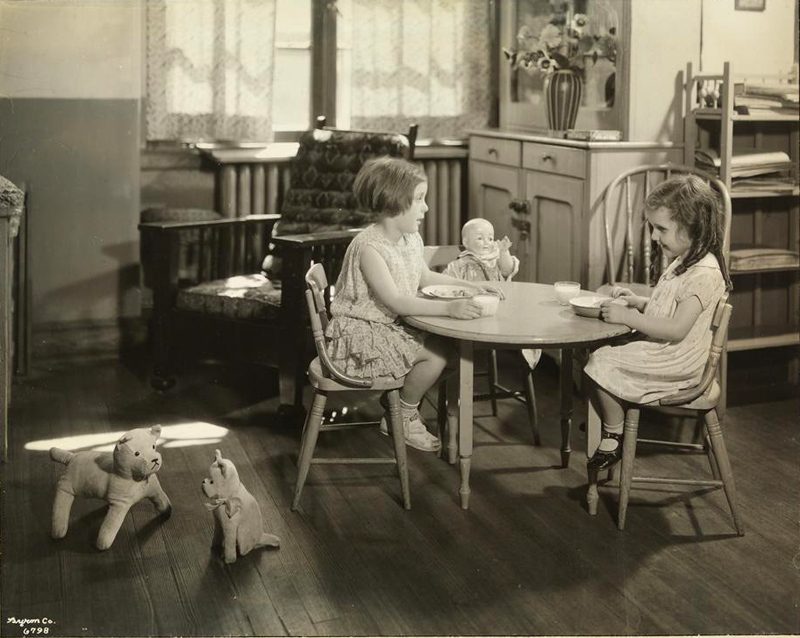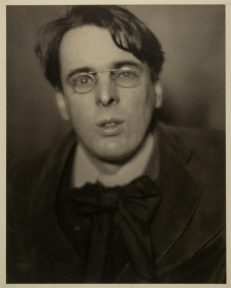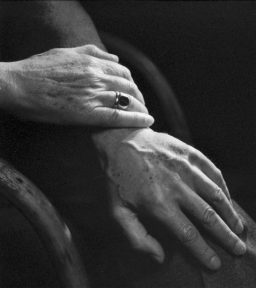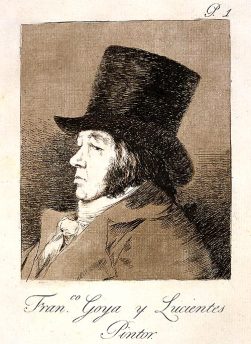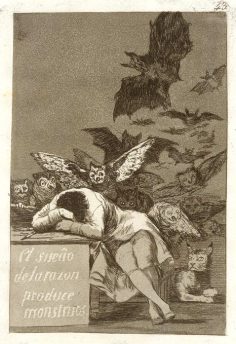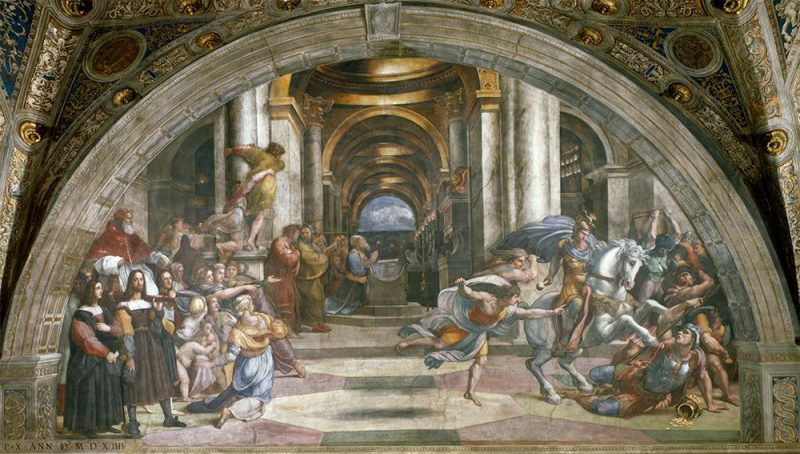
Raphael, Stanza di Eliodoro (Expulsion of Heliodorus), 1511-12, Vatican. Image and original data provided by SCALA, Florence/ART RESOURCE, N.Y.; www.artres.com; scalarchives.com; (c) 2006, SCALA, Florence/ART RESOURCE, N.Y.
With the recent news that the Vatican’s Swiss Guard is releasing a book of recipes, I’m again hearing the myth, perpetuated by Dan Brown among others, that Michelangelo designed the uniforms of the Guard at the behest of his patron, Julius II.




